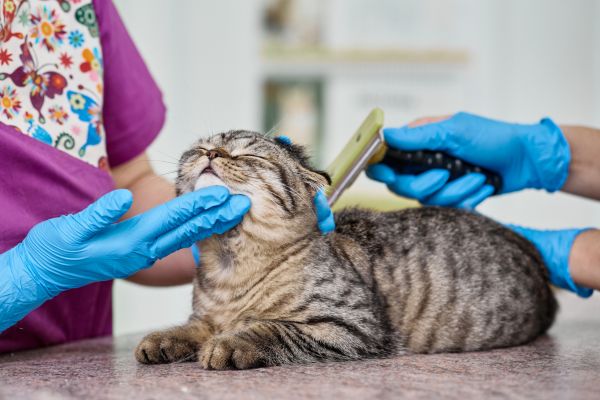Cats are known for their natural grooming instincts. With their rough tongues and agile limbs, they spend a good portion of the day licking and cleaning themselves. However, while they do a decent job on their own, regular cat grooming from their human companions is essential to maintain optimal fur and skin health. Beyond keeping your feline looking sleek and tidy, grooming plays a crucial role in detecting early signs of health issues, reducing hairballs, and strengthening the bond between cat and owner.
Understanding the Importance of Cat Grooming
Cat grooming is more than just a beauty regimen—it’s a vital aspect of your pet’s overall health and well-being. By helping your cat groom, you’re taking an active role in preventing matting, skin infections, and the spread of parasites such as fleas and ticks. Grooming also allows you to monitor changes in your cat’s coat or skin that may indicate underlying medical concerns.
Cats with longer coats are especially prone to developing tangles and mats, which can cause discomfort and even pain. Regular brushing keeps the fur free of knots, spreads natural oils throughout the coat, and minimizes shedding. Short-haired cats may seem easier to maintain, but they too benefit from routine grooming sessions that help remove loose fur and stimulate circulation.
Brushing: A Foundation of Healthy Fur
One of the most effective components of cat grooming is brushing. Not only does brushing remove dead hair, but it also helps to distribute the skin’s natural oils, leaving the coat shiny and smooth. Long-haired breeds such as Persians and Maine Coons require daily brushing to keep their fur in good condition, while short-haired cats can usually get by with a few sessions a week.
Choosing the right grooming tool depends on your cat’s coat type. A slicker brush works well for untangling long hair, while a bristle brush is ideal for smoothing short fur. Cats typically enjoy the sensation of being brushed, especially if the habit is introduced gently and early. Over time, grooming becomes a bonding experience your cat will look forward to.
Bathing and When It’s Necessary
Unlike dogs, most cats do not require frequent baths. Their self-cleaning habits are generally sufficient for daily hygiene. However, there are instances when bathing becomes necessary, such as when a cat has rolled in something sticky or smelly, suffers from a skin condition, or cannot groom itself properly due to age or illness.
When bathing is required, using a cat-specific shampoo is essential to avoid skin irritation. The process should be gentle and calm, starting with lukewarm water and a quiet environment to minimize stress. It’s important to dry your cat thoroughly afterward, using a towel or a pet-friendly dryer on the lowest setting.
Nail Trimming and Paw Care
Trimming your cat’s nails is another essential aspect of cat grooming. Overgrown claws can curve inward, potentially piercing the paw pad and causing pain or infection. Indoor cats, in particular, often need regular nail trims since they have fewer opportunities to wear down their nails naturally.
Handling your cat’s paws gently and frequently can help them become comfortable with nail trimming. While some cats may resist initially, patience and positive reinforcement make a significant difference. Observing the paws during grooming also provides an opportunity to check for cuts, swelling, or signs of fungal infections.
Ears, Eyes, and Teeth: The Overlooked Essentials
Many pet owners focus solely on brushing and forget that proper cat grooming includes attention to ears, eyes, and teeth. Checking your cat’s ears regularly helps identify wax buildup, debris, or ear mites. Ears should be clean and odor-free; any strong smell or excessive scratching warrants a veterinary visit.
Your cat’s eyes should be bright and clear. Wipe away any discharge using a damp, soft cloth, always being careful not to touch the eyeball directly. Grooming around the eyes is especially important for breeds with flat faces, like Persians, who tend to have more tear staining.
Dental hygiene is often neglected in cats, yet it is just as vital as any other grooming task. Brushing your cat’s teeth regularly with feline-safe toothpaste helps prevent tartar buildup, gingivitis, and other oral health issues. Dental treats and toys can also support your cat’s dental care routine.
Dealing with Shedding and Hairballs
Shedding is a natural process, but it can become problematic if not managed properly. Regular cat grooming significantly reduces the amount of fur your cat ingests during self-grooming, which in turn minimizes hairball formation. Hairballs are not only unpleasant for you to clean up, but they can also cause discomfort and digestive issues for your cat.
By keeping up with a consistent grooming schedule, you help control loose fur and keep your home cleaner. During seasonal changes, cats may shed more heavily, requiring extra grooming attention to keep their coats in good condition.
Senior and Special Needs Cat Grooming
As cats age or face certain medical conditions, their grooming abilities may decline. Older cats often suffer from arthritis or obesity, which can limit their flexibility and lead to poor grooming habits. These cats are at a higher risk for matting and skin problems. In such cases, your assistance becomes even more critical.
Grooming senior or disabled cats requires a gentle approach and a bit of extra time. Soft brushes, warm towels, and calming environments help make the process more comfortable for them. Always observe your cat’s reactions and consult your veterinarian if grooming becomes difficult or causes distress.
Creating a Positive Grooming Routine
Establishing a grooming routine early in a cat’s life fosters cooperation and trust. Cats thrive on routine and familiarity, so keeping grooming sessions consistent in terms of time and environment makes the process easier. Use gentle strokes and speak in soothing tones, rewarding your cat with affection or treats afterward.
If your cat is especially nervous or aggressive during grooming, consider breaking the sessions into shorter intervals. Over time, even the most resistant cats can learn to tolerate and even enjoy grooming with patience and persistence.
When to Seek Professional Help
While many grooming tasks can be performed at home, some situations may require the expertise of a professional groomer or veterinarian. Severely matted fur, excessive shedding, skin infections, or behavioral issues during grooming are all signs that it might be time to seek professional assistance.
Professional groomers have the tools and experience to handle more challenging grooming needs, while veterinarians can rule out any underlying health issues contributing to grooming difficulties. Don’t hesitate to ask for help if you’re unsure how to manage a specific grooming concern.
Conclusion: A Happier, Healthier Cat Through Grooming
Cat grooming is a loving, proactive way to care for your feline friend. Far beyond aesthetics, it contributes directly to their physical health and emotional well-being. Whether it’s a quick daily brush, a monthly nail trim, or an occasional bath, each grooming task plays a role in keeping your cat comfortable and content.
By incorporating regular cat grooming into your routine, you not only support your pet’s health but also strengthen the bond you share. With patience, consistency, and a gentle hand, grooming becomes a rewarding experience for both you and your cat—one that results in a lifetime of purrs and affection.





